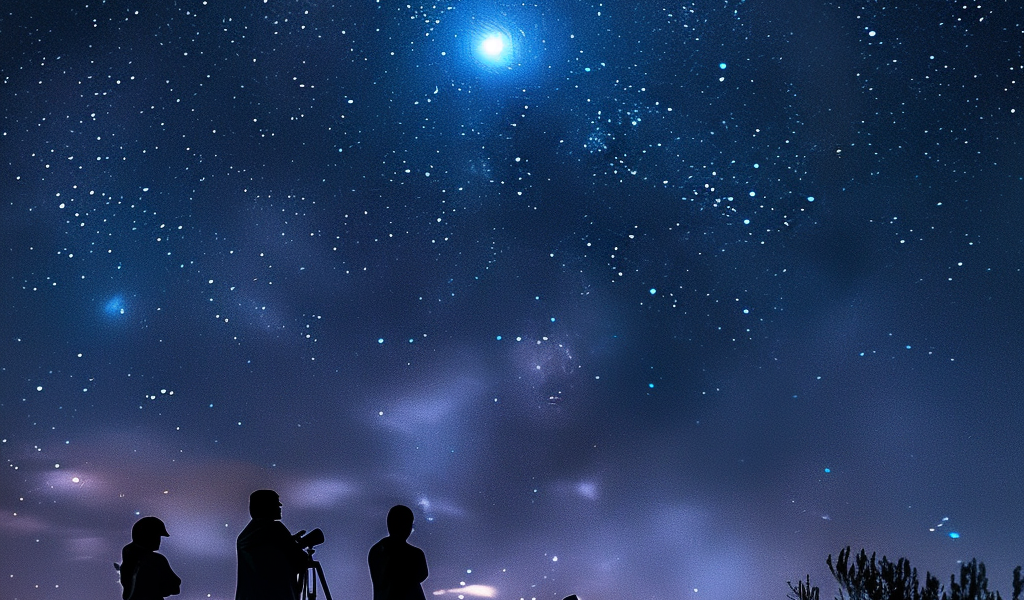The night sky is about to become a canvas for a spectacular astronomical event in the latter half of 2024. A nova explosion in the star system known as T Coronae Borealis, or T CrB, is set to make its appearance, offering stargazers a unique opportunity to witness a celestial phenomenon that has captured the attention of astronomers for centuries.
Unlike the ancient belief that stars are fixed and unchanging, modern astronomy reveals that the cosmos is dynamic, with stars sometimes appearing and disappearing from our view. This phenomenon, known as a “guest star,” was first recorded by ancient Chinese astronomers, who documented the sudden emergence of a star on July 4, 1054. This star, later identified as a supernova, became so bright that it was visible even during the day for nearly a month.
The upcoming nova event in T CrB will not reach the same levels of brightness as the 1054 supernova but will still be a remarkable sight. T CrB is expected to shine approximately 1,500 times brighter than its normal state, making it one of the brighter stars in the night sky, potentially ranking as the 50th brightest star visible to the naked eye. While it may not outshine the most prominent stars in constellations like the Big Dipper, it will certainly be a noteworthy addition to the celestial panorama.
For those interested in astronomy, the T CrB nova presents an exciting opportunity to observe a rare event. Although it may require some effort to locate, the experience of witnessing a nova can be rewarding for both amateur and seasoned astronomers alike. As the nova approaches its peak brightness, it will become a focal point for stargazers looking to expand their knowledge and experience of the universe.
So, what exactly is a nova? The term “nova” refers to a sudden increase in brightness of a star, typically caused by a thermonuclear explosion on the surface of a white dwarf star. In binary star systems, where two stars orbit each other, material from a companion star can accumulate on the surface of the white dwarf. When enough material builds up, it triggers a fusion reaction, resulting in a dramatic increase in brightness. This process can occur multiple times, leading to recurrent novae, such as T CrB.
The history of novae dates back to the 16th century when Danish astronomer Tycho Brahe observed a new star in the constellation Cassiopeia in 1572. This event marked a significant moment in the study of stellar phenomena, challenging the long-held belief that the heavens were immutable. Tycho’s observations paved the way for future astronomers to explore the nature of stars and their behavior.
As we look forward to the T CrB nova, it’s essential to understand how to observe such events effectively. Stargazers should find a location with minimal light pollution to maximize visibility. The best viewing times are often during the hours after sunset and before sunrise when the sky is darkest. Binoculars or telescopes can enhance the experience, allowing observers to appreciate the details of the nova and its surrounding celestial neighborhood.
In preparation for this event, astronomers and enthusiasts alike are encouraged to stay informed about updates regarding the nova’s brightness and visibility. Various astronomy clubs and organizations often share insights and tips on how to make the most of such occurrences, providing resources for both novice and experienced observers.
The excitement surrounding the T CrB nova is not only about the spectacle itself but also the opportunity it presents for education and community engagement. Astronomy has a unique ability to bring people together, fostering discussions about the universe and our place within it. Events like the T CrB nova can inspire future generations of scientists and astronomers, sparking curiosity and a desire to learn more about the cosmos.
As the countdown to the nova event continues, stargazers are encouraged to prepare their telescopes, gather their friends and family, and get ready for an unforgettable experience under the stars. Whether you’re a seasoned astronomer or simply someone who enjoys the beauty of the night sky, the T CrB nova promises to be a highlight of 2024’s astronomical calendar.





